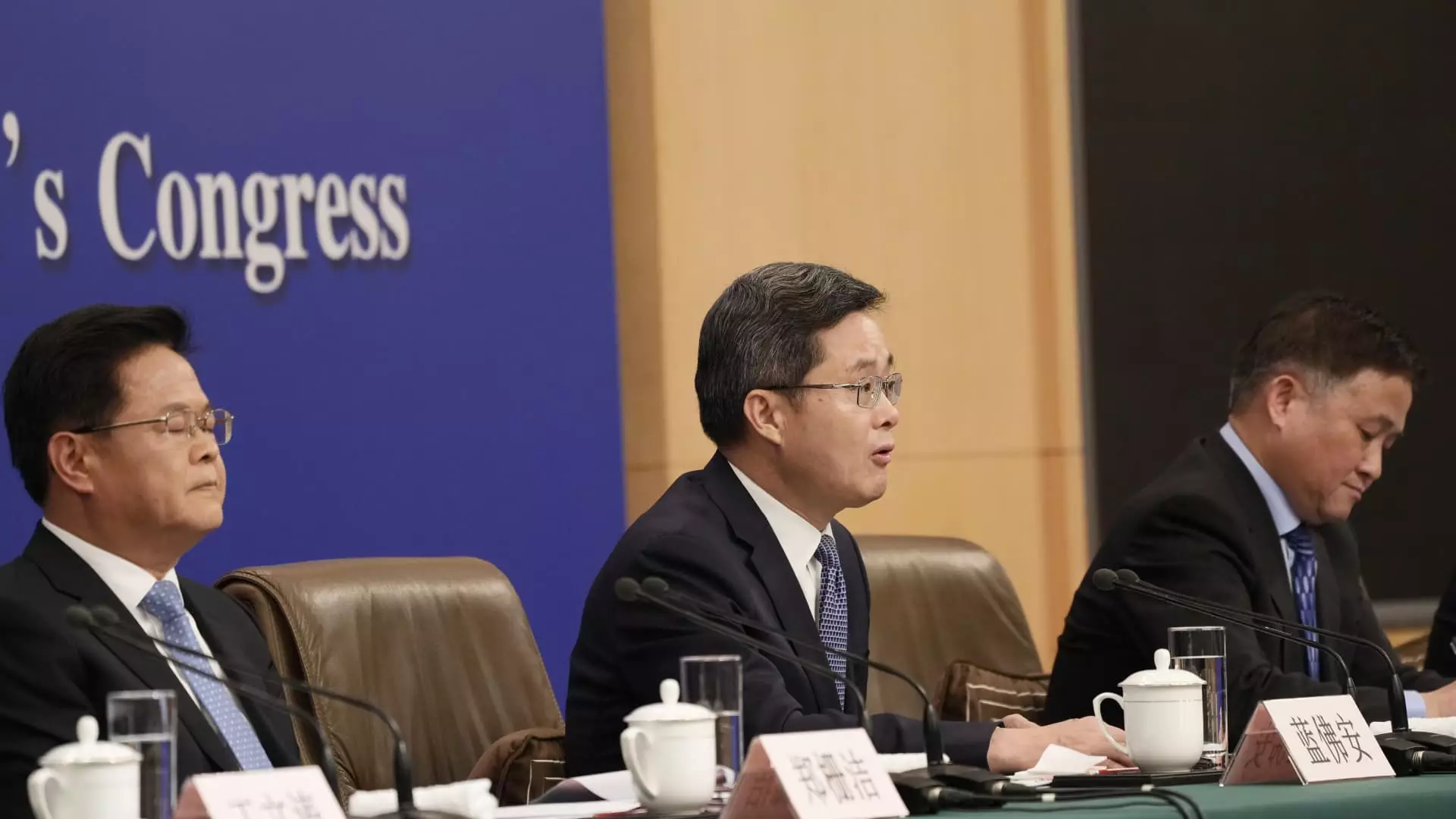In a recent address by China’s Minister of Finance, Lan Fo’an, the government indicated a willingness to enhance fiscal measures to combat the country’s economic challenges. This declaration comes at a time when multiple crises, including local government debt and a faltering real estate sector, threaten stability. While the minister reassured that discussions are underway regarding the expansion of debt and budget deficits, the lack of immediate actionable policies has left many economists apprehensive. The need for additional fiscal support is overwhelming, yet the government seems hesitant to unveil substantial stimuli amidst rising anxiety in financial markets.
During a high-profile meeting led by President Xi Jinping, there was an acknowledgment of the urgency to bolster monetary and fiscal policy. However, the absence of specific strategies left analysts speculating about the real intent behind these high-level meetings. Predictions on the necessary fiscal stimulus vary widely—from approximately 2 trillion yuan ($283.1 billion) to more than 10 trillion yuan—highlighting the uncertainty and differing opinions on the scale of intervention required to stabilize the economy.
Ting Lu, Nomura’s chief economist for China, provided cautionary insights, emphasizing that any proposed fiscal stimulus would ultimately require legislative approval from China’s parliament, which is set to convene later this month. This bureaucratic hurdle raises questions about the speed and efficiency of potential interventions. There’s a critical need to consider not just the size of financial packages but also their allocation—whether funds will be directed toward alleviating local government fiscal burdens or stimulating consumer spending.
Recent data indicates that China’s retail sales have shown only marginal growth in recent months. Moreover, the real estate sector continues to experience significant challenges, suggesting that the economy has not rebounded as anticipated. Despite a 5% increase in GDP during the first half of the year, there are increasing fears that China might not meet its overall goal for the year, set at around 5%. The upcoming announcement from the National Bureau of Statistics regarding third-quarter GDP on October 18 is highly anticipated and is likely to be a pivotal moment in assessing the effectiveness of current policies.
In the wake of high-level discussions around economic stimulus, mainland Chinese stock markets exhibited a high degree of volatility. Following a weeklong holiday, the reopening saw a decline in major indexes, which retraced to levels seen in late September. Prior to this decline, there was a notable market rally fueled by optimism surrounding governmental policy actions, as seen when the CSI 300 index recorded its most significant weekly gain since 2008.
The recent measures implemented by the People’s Bank of China (PBOC)—including interest rate cuts and the extension of existing real estate support for another two years—signal a proactive approach to stimulating the economy. Additionally, a substantial liquidity program, valued at approximately $71 billion, was introduced to encourage stock investments. Nonetheless, despite these attempts to inject liquidity into the market, investor confidence appears tenuous, highlighting broader concerns about economic sustainability.
The National Development and Reform Commission’s (NDRC) announcement to expedite the utilization of 200 billion yuan initially earmarked for future investments did not extend to any new stimulus measures, leaving many observers to ponder the effectiveness of these policies. Although the NDRC’s move was a step towards development, its inability to stimulate immediate growth raises questions about the inherent limitations within China’s economic framework amid global pressures.
As China grapples with significant economic challenges, the government’s recent announcements underscore a critical juncture that could shape its financial landscape. A balancing act between immediate fiscal interventions and long-term economic health is vital. While external circumstances, such as global economic conditions and domestic consumer behavior, heavily influence China’s path, the ability of the government to manage local debts and revive the real estate market will ultimately determine its economic trajectory. As stakeholders await concrete actions post-parliamentary discussions, maintaining transparency and promoting confidence in both domestic and international markets will be key to fostering sustainable growth in the coming months.

